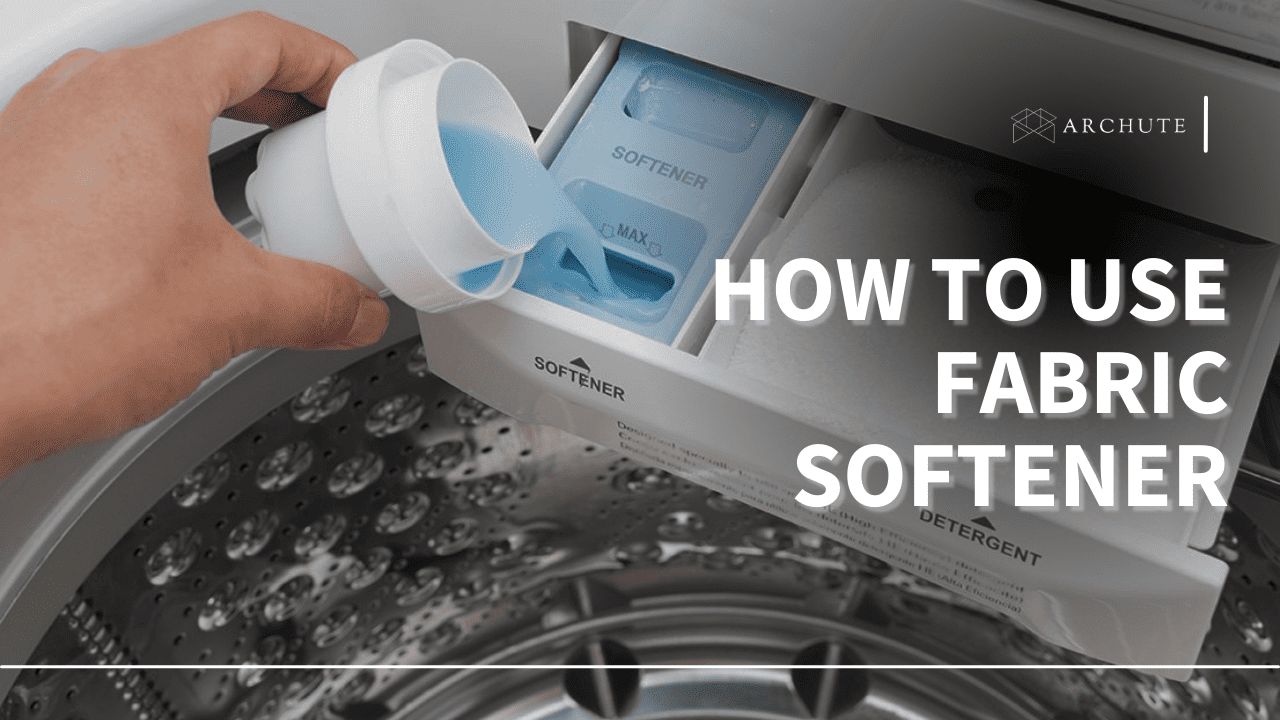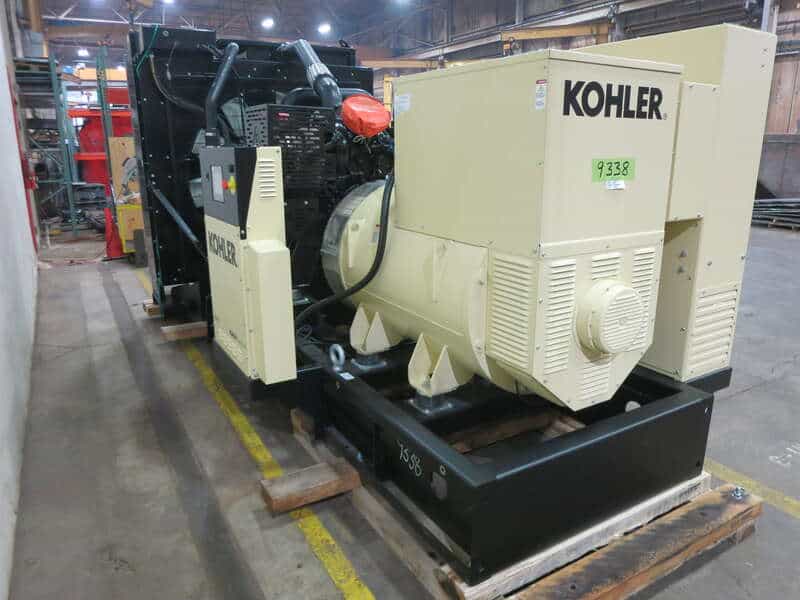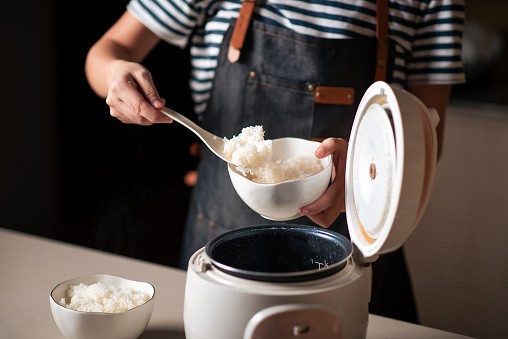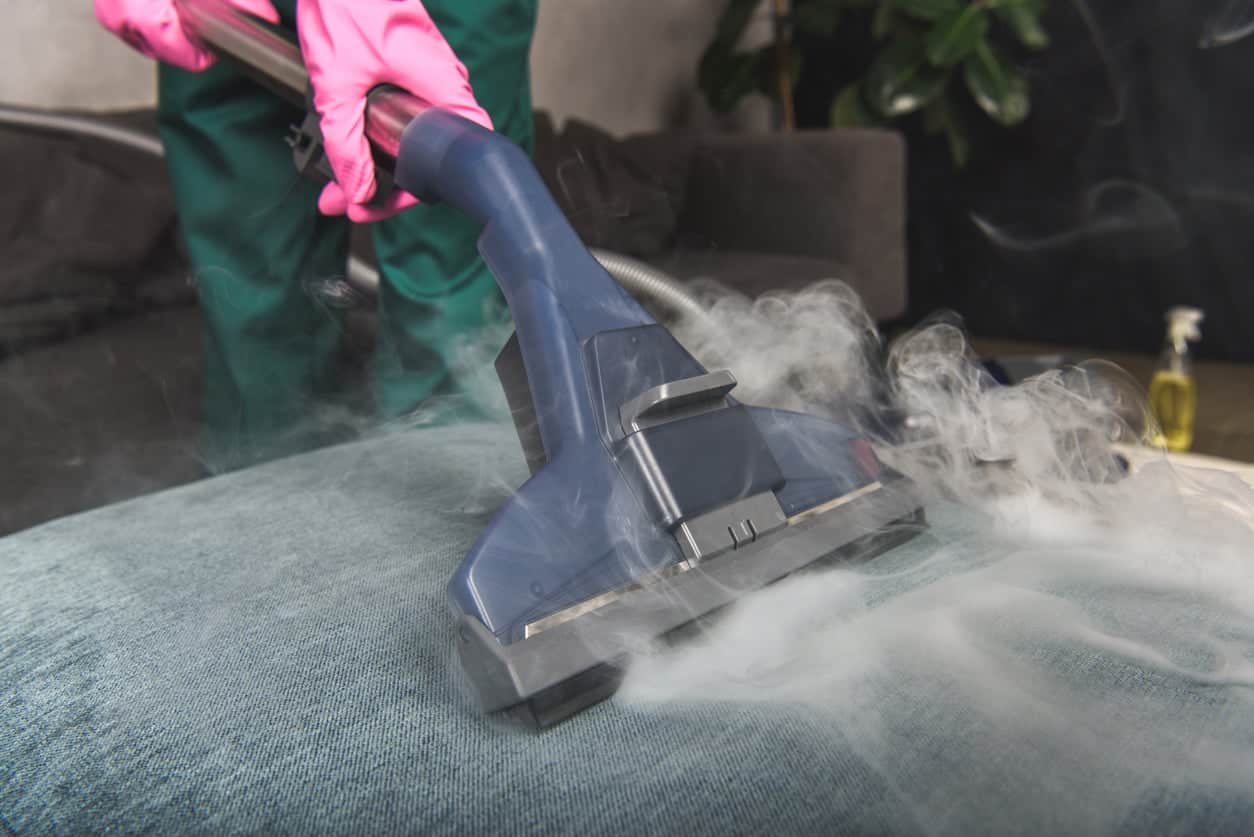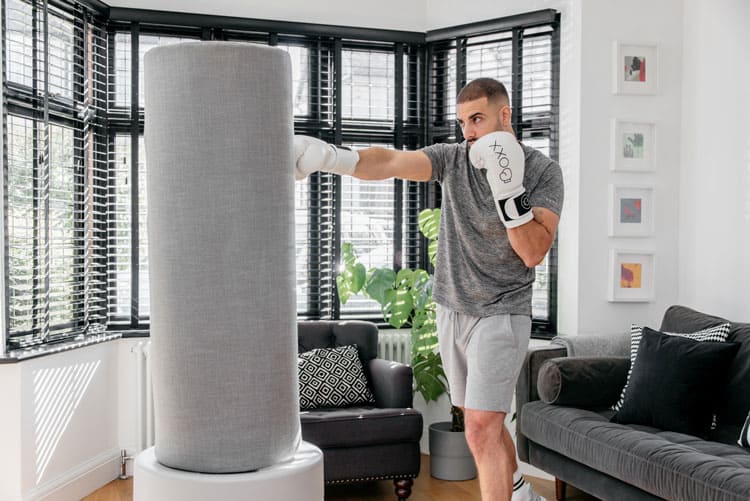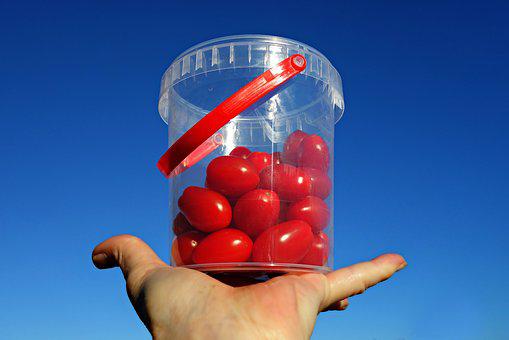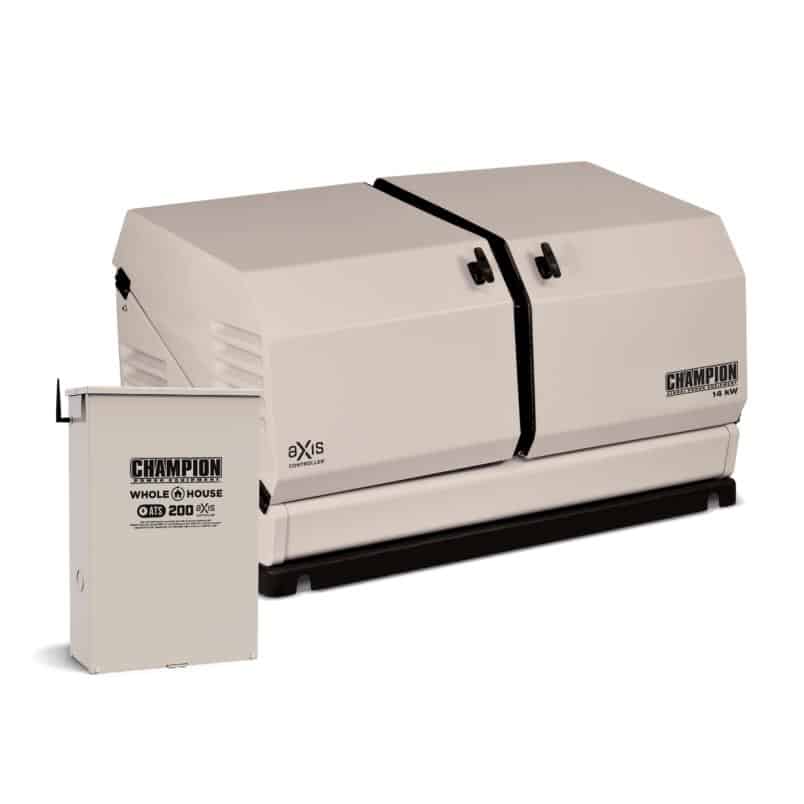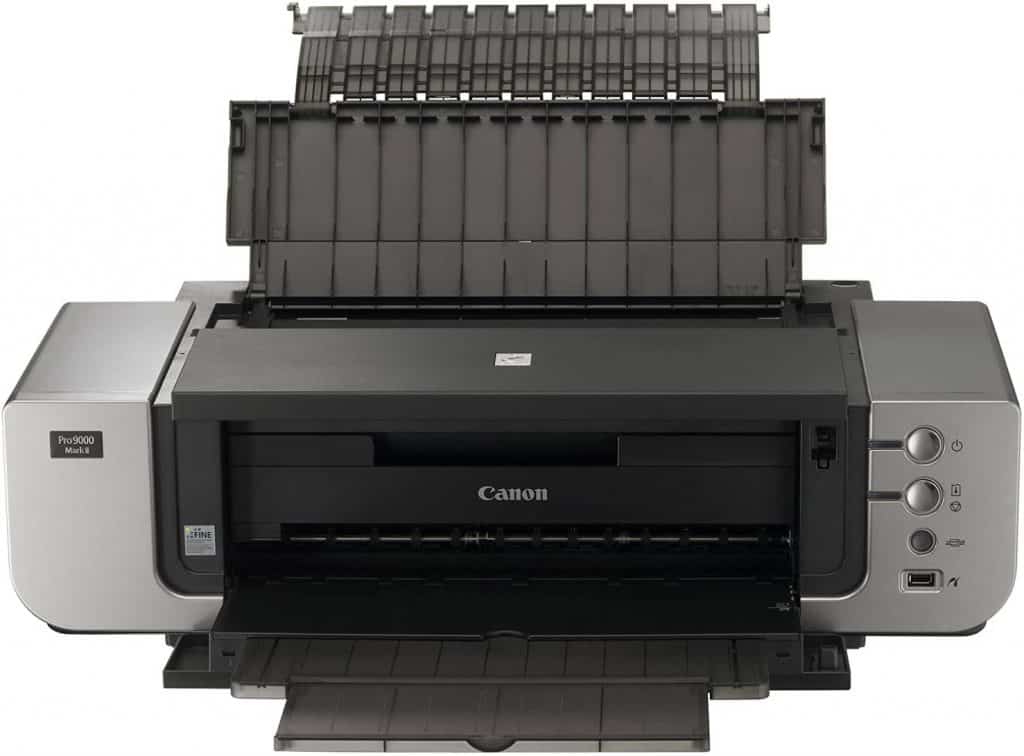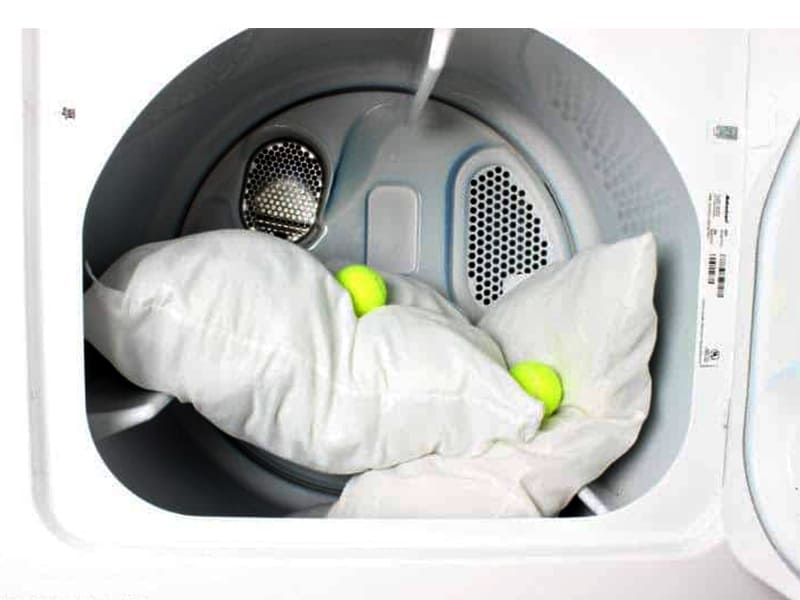Fabric softener just gives a better comfort feeling for the clothes. The best fabric softener will not only add moisture and guard your garments against static but also leave them smelling divine. A fabric softener is also a detergent for some, but mostly it is just a fabric softener, especially for those that have brands with a two-in-one fabric softener detergent.
Of course, there are cases when some people even those who have experience would find it challenging to know when and how to use a fabric softener. Wondering when to use the fabric softener or how to use it? Chillax! We’ve got you covered!
What is a Fabric Softener?
Fabric softener or fabric conditioner is a product added to any fabric with a combination of substances which work as a lubricant for fabric fibers thereby making clothes soft and smelling good.
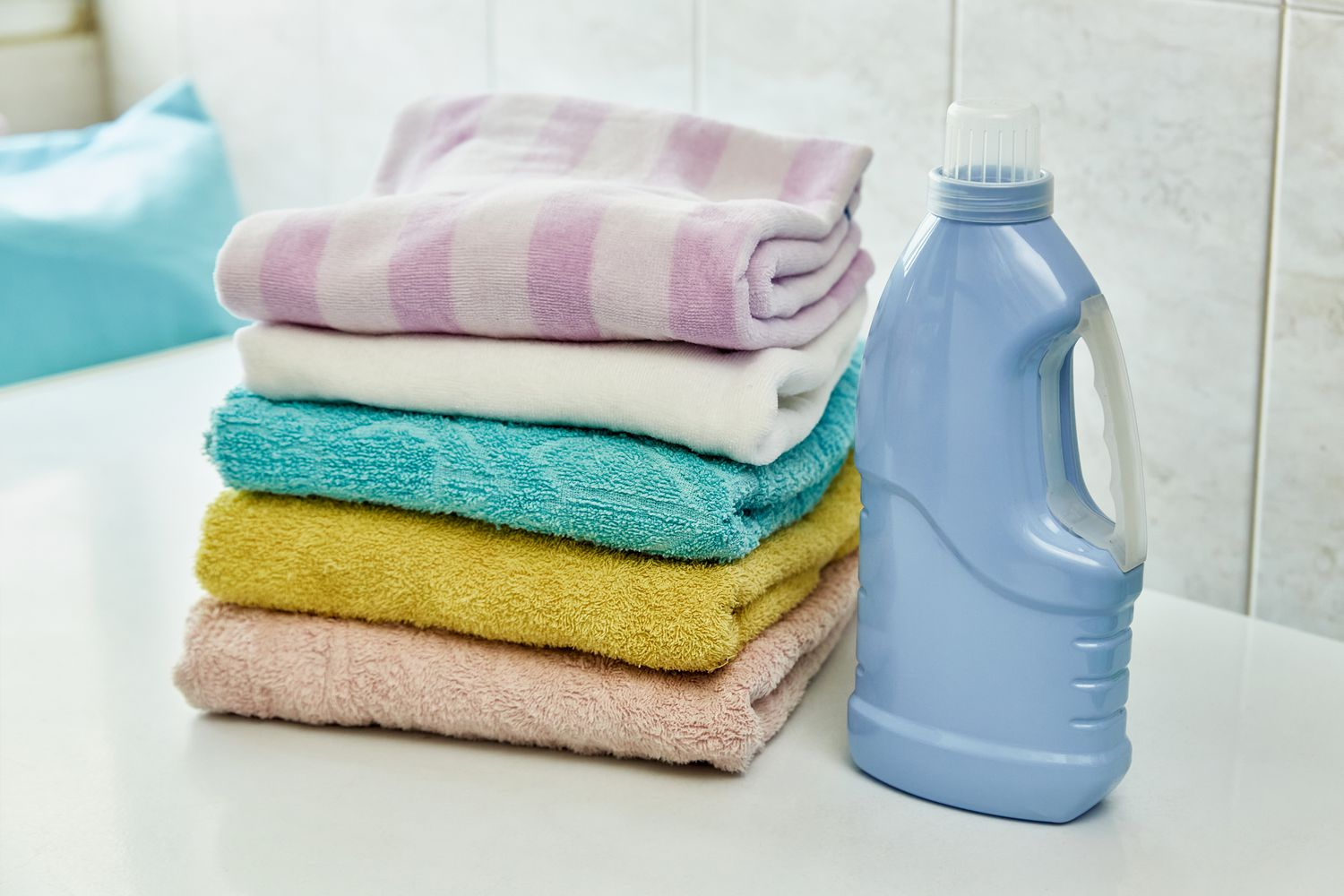
Image Source: realsimple.com
Despite the fact that fabric conditioners are available in various forms they are all composed of positively charged ions that will cover the fiber of fabric in your clothes. These positive ions will combine with the negative ions at the end of the fabric and cause them to float and become more smooth to the human touch.
What Does a Fabric Softener Do?
Fabric softeners may be used in a variety of ways. It is also a fabric guard that helps to protect your clothes in addition to the fragrant smell it gives your clothes. It ensures your fabric remains healthy even after you have worn it on several occasions.
Whether you want to use the fabric softener in the washing machine or other ways, using it will definitely contribute to the reduction of stretch and piling of the clothes. Also, some fabric conditioners will also help in protecting the color of your items from fading.
A fabric softener contains additives that will ensure ease of sliding between the strands of your clothing. The lubricants will be spread over the fibers as well as causing them to become softer and hence there will be lesser static charging as the fibers move repeatedly against each other in the dryer or washer.
Why Do You Use a Fabric Softener?
There are many reasons why people prefer to use fabric conditioners but most of them are due to the added fresh scent that it gives and there is nothing wrong with that. There exist varies fabric softeners that have varies scents therefore the presence of fabric softeners in clothes will make them complete.
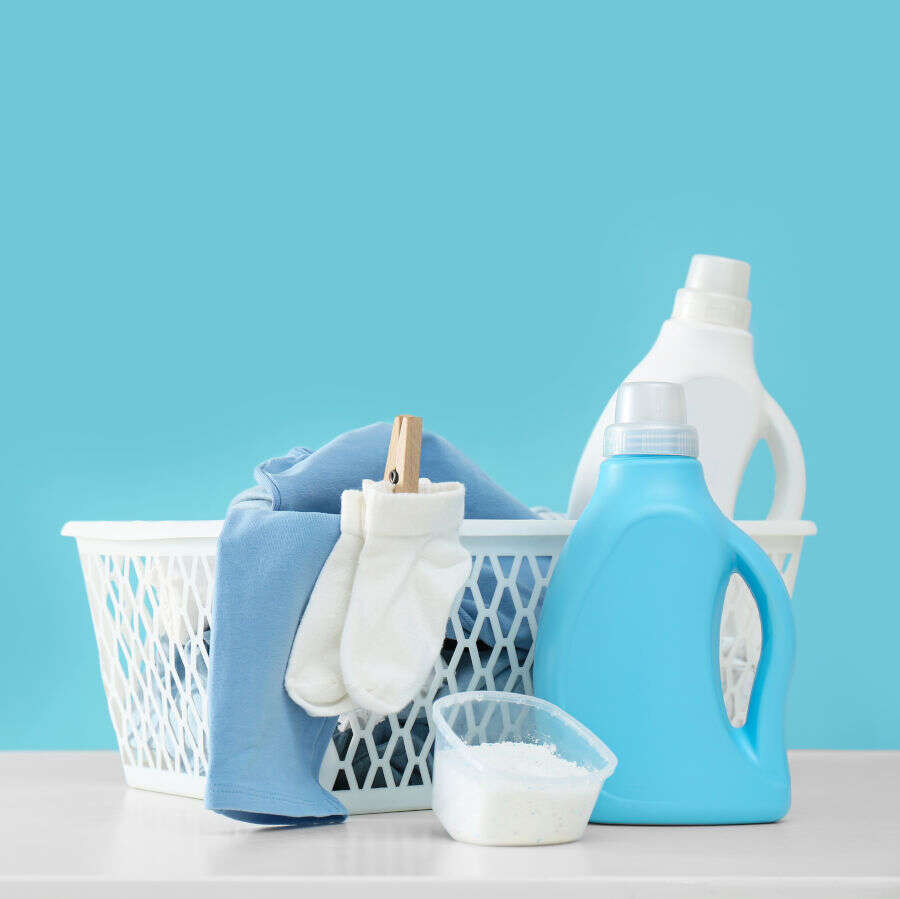
Image Source: candy-home.com
There are also other individuals who will put fabric softener together with their laundry because they want such a soft texture. The smell of fabric conditioners gives only a small clue of what the product is really capable of doing. For example, vegetable ones can be used if you do not prefer any scent or have sensitive skin.
Therefore, fabric softener may be safe for regular fabrics like bedding and cotton garments. This is because it makes the sheets, pillowcases, and T-shirts feel softer and cozier. Moreover, they can assist in mitigating the chances of causing any form of irritation to those people who may have sensitive skin.
How to Use Fabric Softener While Washing Clothes
Using a fabric conditioner is hardly a difficult task; in the majority of cases, a person needs to pour the product into a washing machine.
Below are the steps when applying a fabric conditioner in washing machines;
Step 1: Read the Instructions
It is therefore important to always cross-check and read the care label of all the garments in the laundry and confirm if they are machine washable.
Step 2: Measure
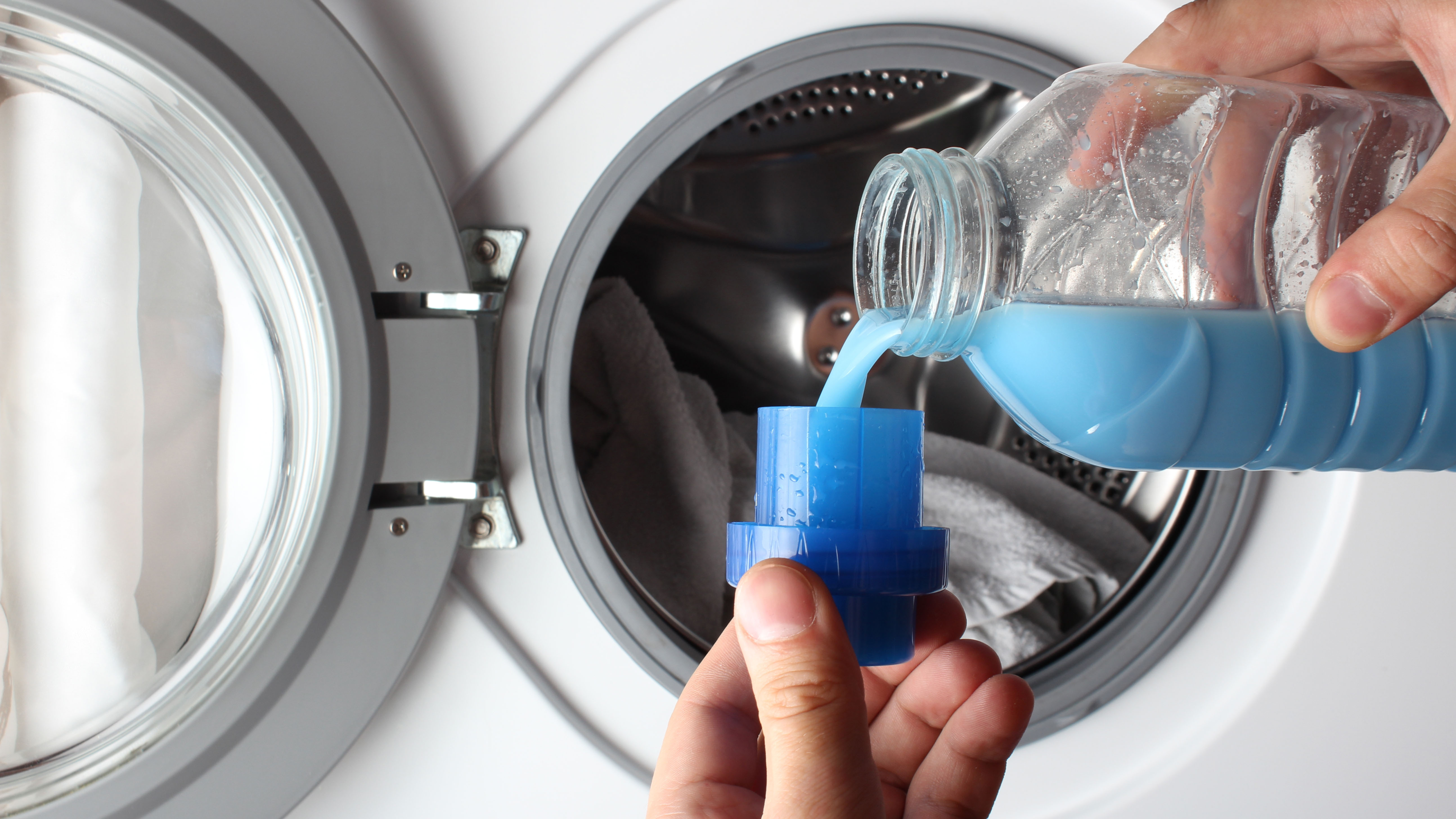
Image Source: tomsguide.com
The amount of fabric softener to be poured should also be depending on the size of the load The correct amount of fabric softener should be measured with a detergent dosing cup. On the packages there is information about how much softener you should use for your recommended dose.
Step 3: Pour into the Softener Dispenser
Add the fabric softener to your washing machine’s softener dispenser prior to starting a wash cycle as you add your laundry detergent. This automatic dispenser is a small chamber with a symbol of a star or a flower that is marked with the required location for the introduction of fabric softener. But one should note that the position may be different in other washers too, hence, the manual provided with the washing machine should be referred to. do not pour it directly into the drum because it must be diluted or else you will stain your clothes.
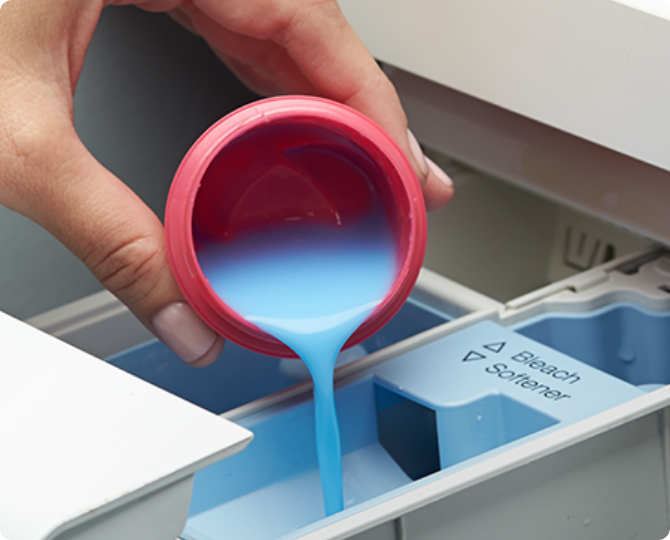
Image Source: downy.com
The fabric conditioner will be discharged by the washing machine during the last rinsing stage. To do this, pour the fabric conditioner directly into your washing machine drum before the rinse cycle unless you are using an older washing machine or a machine at a launderette in which case you will need to do this yourself before the rinse cycle.
How to use Fabric Softener when Handwashing Your Clothes
Fortunately, it is also possible to use a fabric softener during a hand wash. The process to follow is as indicated below.
Step 1: Dilute the fabric softener
Liquify the required quantity of fabric conditioner in a clean-rinsing bucket using water. Then swirl it to mix and rinse you clothes in the solution for the best results.
Step 2: clean your hands
Also, it is vital to remember to clean your hands after using a fabric conditioner to lessen the likelihood of irritation. However, it may result in skin reactions in case an undiluted fabric conditioner is applied and left on the skin for long by the user with sensitive skin.
Where Do You Add Fabric Softener in the Washing Machine?
For such types of washing machines that have an automatic fabric softener dispenser, all you got to do is place the fabric conditioner in the dispenser. Although the position of the dispenser as well as how you can install it differs from one type of the washing machine to another.
A). Front Loader
You will have a detergent drawer in front-loading washers where you could pour detergent or softeners. You have to make a pull toward the drawer in order to add fabric softener to the machine.
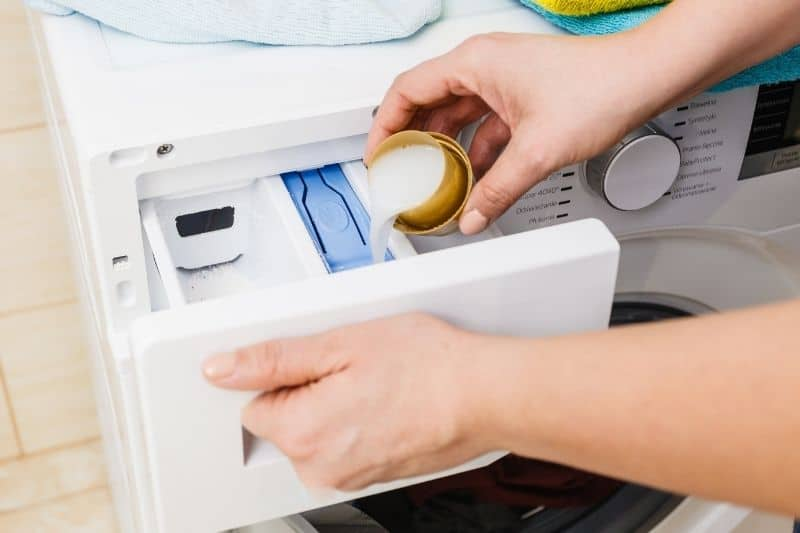
Image Source: inthewash.co.uk
This drawer might have some indication of the quantity of fabric conditioner to be added. Do not overfill the drawer above the indicated maximum fill line as this will only lead to spillage or pre-mature release of the fabric as the case may be leading to staining of the clothes.
After you have poured in the required amount of softener for the subsequent load, put the drawer back. The fabric should be released automatically on the rinse cycle.
B). Top Loader
In top-loading machines, the dispenser is located at the top of the agitator directly at the center of the drum. Thus you have to put the right quantity of fabric softener into the dispenser and then add water to make the fabric softener.

Image Source: blog.bellinghamelectric.com
Also do not overfill the dispenser just as is the case with a front loader. During the wash cycle once it starts the fabric softener will be automatically dispense during the rinsing cycle.
Cleaning the fabric softener dispenser: reaching behind the door. However if you fail to do this the residue may lead to blocking and damaging of the dispenser. This accumulation also causes the development of mold in the top loader and the front- loading washing machines.
How Do You Add Fabric Softener Without a Dispenser?
Still, there are instances when fabric softener dispenser is absent in your washing machine. Consequently, you have to add the fabric conditioner to the washer while it is rinsing. But it must be noted that fabric softener should not be poured right over the clothes. Rather, it should be poured over a water pocket at the top of the load so that it will be diluted before it is dispersed.
Pouring the fabric conditioner during the wash cycle will only mean that it will find its way out of the clothes before it can penetrate. Also, pouring it after the rinse cycle will not ensure that it is sufficiently washed out.
Liquid Vs. Powder Vs. Dryer Sheets, Fabric Softeners
Fabric softeners come in different forms: including liquids, powders, dryer sheets, and dryer balls.
1. Liquid Fabric Softener
A liquid softener works best in the deodorizing and rejuvenating your clothes but it is the most costly of the three. Conventional liquid fabric softeners will get into your fabrics during the washing process. But there is a weakness of liquid softeners that they remain in the washing machine and can even stain clothes if not suitable diluted and used.
2. Powder Fabric Softeners
Similar to the liquid fabric conditioners, the powder fabric softener will also be added into the wash cycle. They are slightly uncomfortable but rather inexpensive compared to all the others.
3. Dryer Sheets
Dryer sheets are just small pieces of paper with a pleasant fragrance, stearic acid and other substances. As the dryer heat; the stearic acid liquifies and passes to your clothes; thus repelling static and giving your clothes a pleasant fragrance.
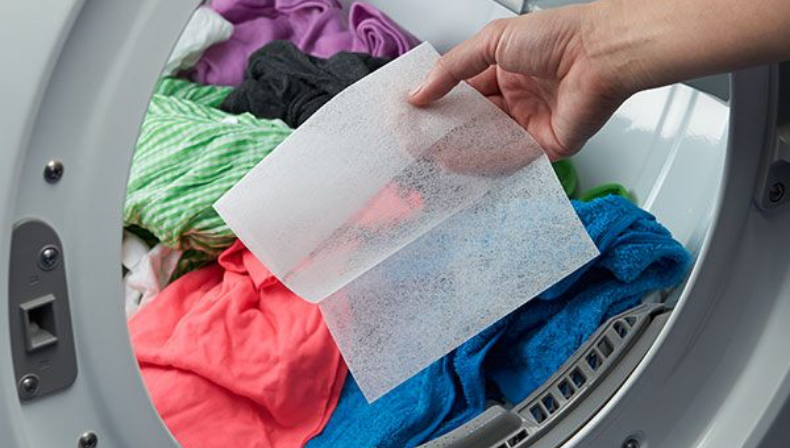
Image Source: downy.com
Dryer sheets are less expensive and offer easier use than liquid fabric softeners. The consumer just needs to put one or two of these in the dryer and he or she is done. This is how to use Dryer sheets;
Step 1: Load Wet Laundry into the Dryer
Rumble each wet piece of laundry to minimize wrinkling and put them in the dryer. But do not over stuff the dryer because the clothes and this dryer sheet need some space to move around.
Step 2: Add the Dryer Sheet
Add one or two dryer sheets on top of the pile of laundry. It is best added last so that it does not get trapped between clothes as it circulates in the dryer.
Step 3: Remove the Dryer Sheet
Once the cycle is over, take out the dryer sheet(s) and throw it away. It is easy to forget to remove them from the dryer after each cycle and if they remain in the drum, they will eventually end up either in the lint filter or blocking an air vent.
4. Dryer Balls
Dryer balls are just wool balls that you are able to put in with the dryer to assist in softening and freshening the garments. These balls can also be helpful for speed dry because they are capable of absorbing the moist from clothes.
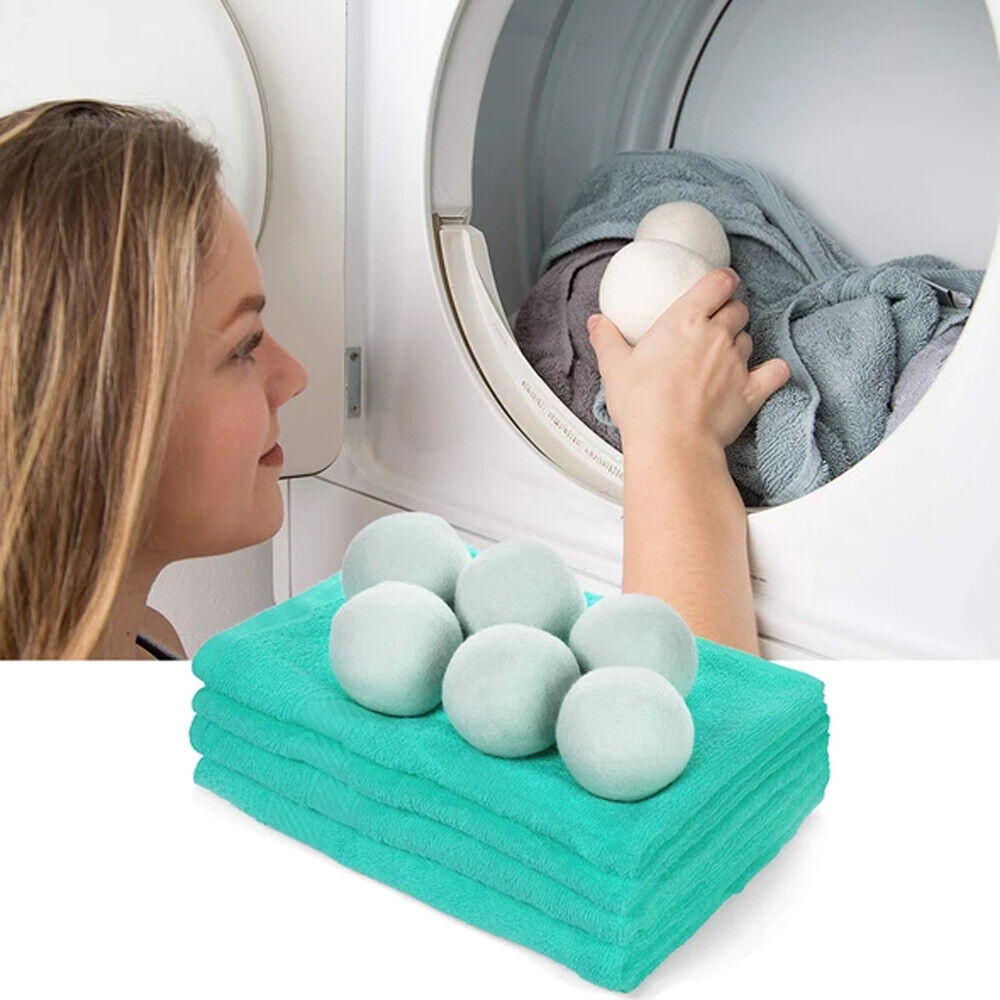
Image Source: ebay.com
These balls are usually considered better than the sheets as they can roll better and are round shaped. Both are excellent products to use if you want to do away with a liquid fabric softener. When using dryer balls, one should place the wet laundry in the dryer machine followed by placement of the plastic or natural wool dryer balls on top of the wet garments in the drum. Use of two or three balls can be a useful adjuvant to get rid of static. Finally, get the dryer balls and at the end of the cycle to reuse them.
When Should You Not Use Fabric Softener?
Some fabrics due to their special features should not be mixed with fabric conditioners. In the case you are not sure whether the fabric softener should be applied to or excluded from the use with the particular material, the label should be checked.
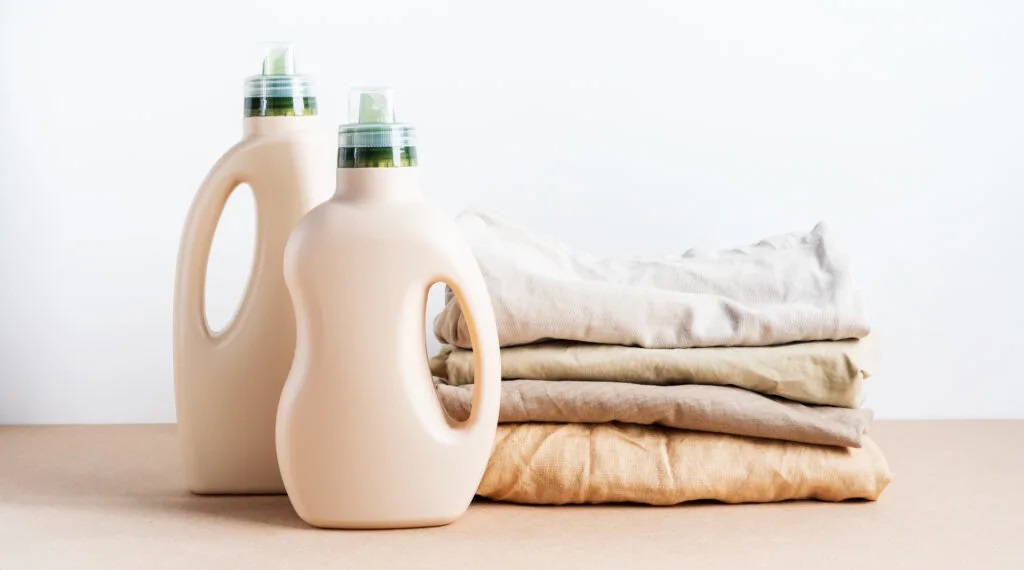
Image Source: zerowastememoirs.com
There are several items that should never be combined with a fabric softener;
A). Microfiber
Microfiber is a smooth material, but individuals continue to desire to put fabric softener on it to guarantee its smoothness. But this fabric is meant to be moist and when you treat the fibers by using the fabric softener they do not become moist and hence they can not be absorbent.
Further, they act well in the collection of dust, dirt, and moisture as microfiber materials are highly electrical. Therefore, when a fabric softener covers the fibers, some aspects of static charge are reduced, and consequently, it does not attract dust and moisture as expected.
B). Athletic Wear
It should be added that fabrics used in the manufacture of athletic wear or workout clothes are usually those that have moisture-wicking properties. A little bit of garment made of the material that absorbs sweat will assist in evaporation of the sweat thus enabling cooling of the body. They will also enhance the application of fabric conditioners which will ensure a coating lubricant on the fibers and thus it makes your fabric unable to transfer moisture.
C). Towels
While it is fine to use fabric softeners on your towels as they leave them soft, frequent application can lead to a reduced absorptive capacity of the said towel. Therefore, it is advised not to add fabric softener in the laundry of the towels every time.
D). Water Repellent and Flame Resistant Fabric
The same way the fabric softener can alter the fabric’s absorbency or wick ability to water or sweat, it may also change the fabric’s water repellency. The performance of a water-repellent fabric may be easily reduced as the actual function of fabric softener is to cover the fibers.
Adding fabric softeners to such fabrics that have been designated flame resistant will render the clothing less flame resistant. Fabric conditioners consist of a number of chemical that may in turn be flammable. Nevertheless, as in water-repellent fabrics, the fabric softener covers the fibers, thus, rendering the flame-resistant properties inactive.
Tips to Consider When Using Fabric Softeners
-
- Always use a dilute fabric softener directly on your clothes as the concentrate can spot or stain.
- It is always important to adhere to the instructions as provided by the specific fabric softener’s bottle.
- However, it is important that you do not use quantities that are beyond what is recommended as that may lead to fading of your clothes as well as causing them to be dirtier!
- Clean your washing machine periodically after using the in-wash fabric softeners. The lubricants that are used on the garments also stick on the drum of the washer and tend to retain odors and soil.
- Do not use fabric softeners for some types of materials for example fabrics for sportswear this may hamper their use.
- Wash your dryer every four to six months if you use dryer sheets to avoid redeposits on your clothes.
Frequently Asked Questions (FAQs) On Fabric Softeners
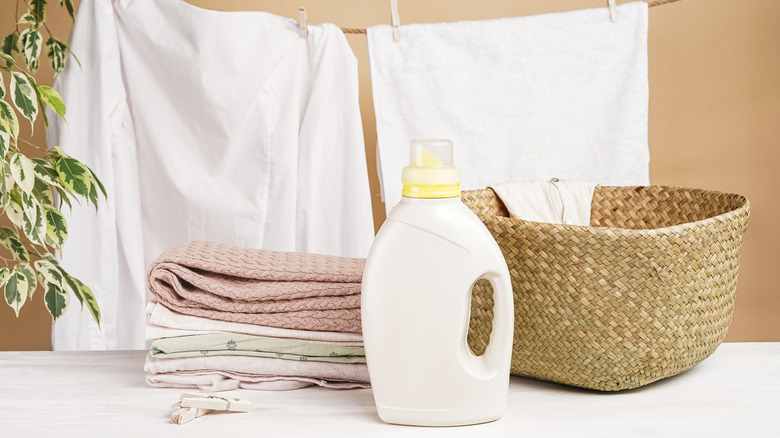
Image Source: housedigest.com
1. Can you soak clothes in fabric softener overnight?
One should not keep his or her clothes or other piece of fabric kept in fabric softener for prolonged hours. Though fabric softener makes your clothes smell nice and fresh it could make them dirty. The exposure time of the clothes in fabric softeners should not exceed five minutes.
2. Can you add fabric softener at the beginning of the wash?
One can only use fabric softener at the start of the wash cycle if they have an automatic dispenser. Putting it directly during the washing process might even color your clothes if the washing machine does not have sufficient water for dilution. However, it is recommended that one adds it during the rinse cycle for better results.
3. When does fabric softener automatically get dispensed?
When the fabric softener is applied in a full-size or a trustworthy portable washing machine, either front or top –loading types, an automatic dispenser will release it at the right time within the rinse cycle. But what counts as a plus is the setting and the number of rinse cycles that a washing machine may have.
4. Can you put fabric softener straight into the washing machine?
The fabric softener should be diluted. Thus, never pour it straight into the drum; it may stain your clothes. To that instead of adding it to the washer direct pour the softener in the dispensers on your washing machine and the machine will itself during the process of rinse release the softener.
5. Do you mix water with fabric softener?
Fabric softener is not meant to be applied directly on fabric but it needs to be diluted by adding water to it. To avoid any misunderstandings, you should pour your softener in the right dispenser of your washer, so it is automatically discharged and diluted during the last rinse cycle of your washer. If however you are using hand washing then you will need to mix you soften with water and then add the clothes.
6. How do you make your garments smell good without fabric softener?
I have some natural tricks for you to try so you can spiff your laundry without using the harsh chemicals that stain your clothes and harm the environment. These tricks include;
- Vinegar as a fabric washing alternative.
- Putting baking soda in the rinse cycle of a washer. Soda cleans and removes odor from the fabrics.
- Through essential oils namely lavender; tea tree oil; peppermint; lemongrass; and eucalyptus. A couple of drops of these essential oils can be mixed in wool dryer balls and thrown with wet laundry rather than using fabric softener.
7. When should you use fabric softener?
It is recommended that you should use fabric softener in the last rinse. The softening effect of a fabric softener is as a result of a chemical residue that is left on the clothing during a wash cycle and therefore adding the fabric softener during this cycle will only eliminate it making such an operation ineffective.
8. Can you put fabric softener and water together?
No. Detergents and fabric softeners do not form a strong mixture; rather they are quite similar to water and oil. This is because a chemical reaction between them would make either of them inefficacious. Thus, you should place softer and detergent in distinct pockets of the washer, and the washer will then discharge each substance on its proper cycle.

